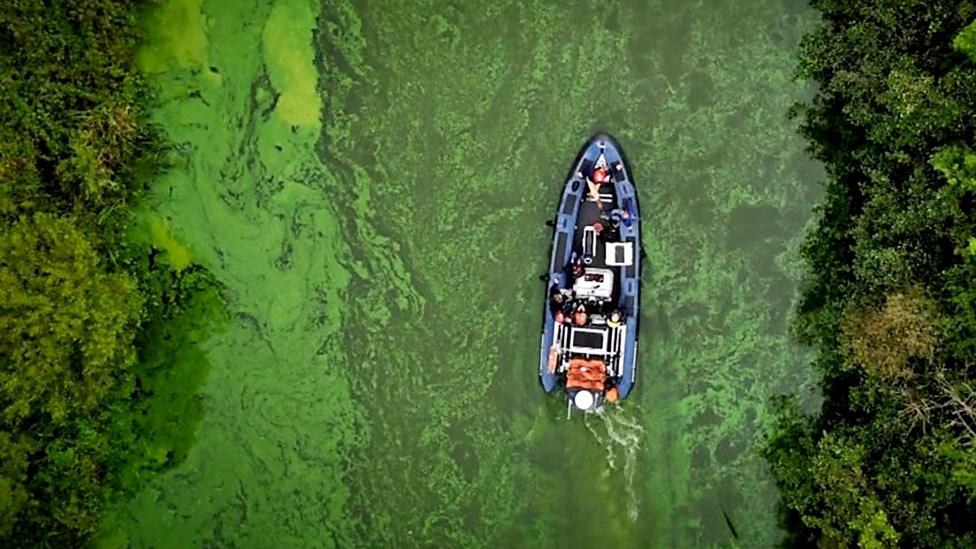What is blue-green algae and why is it a problem?
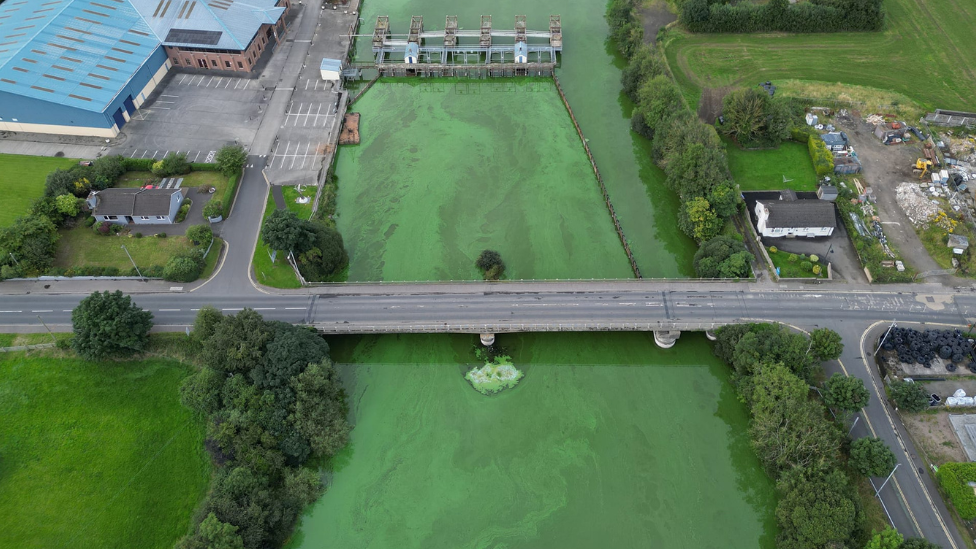
Last year saw the worst bloom of blue-green algae since the mid-1970s
- Published
Blue-green algae has returned to Lough Neagh in high levels.
Large green mats have formed around the lough, particularly in the north-east.
The blooms previously closed bathing waters in Portstewart and Portrush.
A "very sharp uptick" in the amount of potentially toxic algae has been noticed by scientists monitoring the lough.
But what actually is it?
What is blue-green algae?
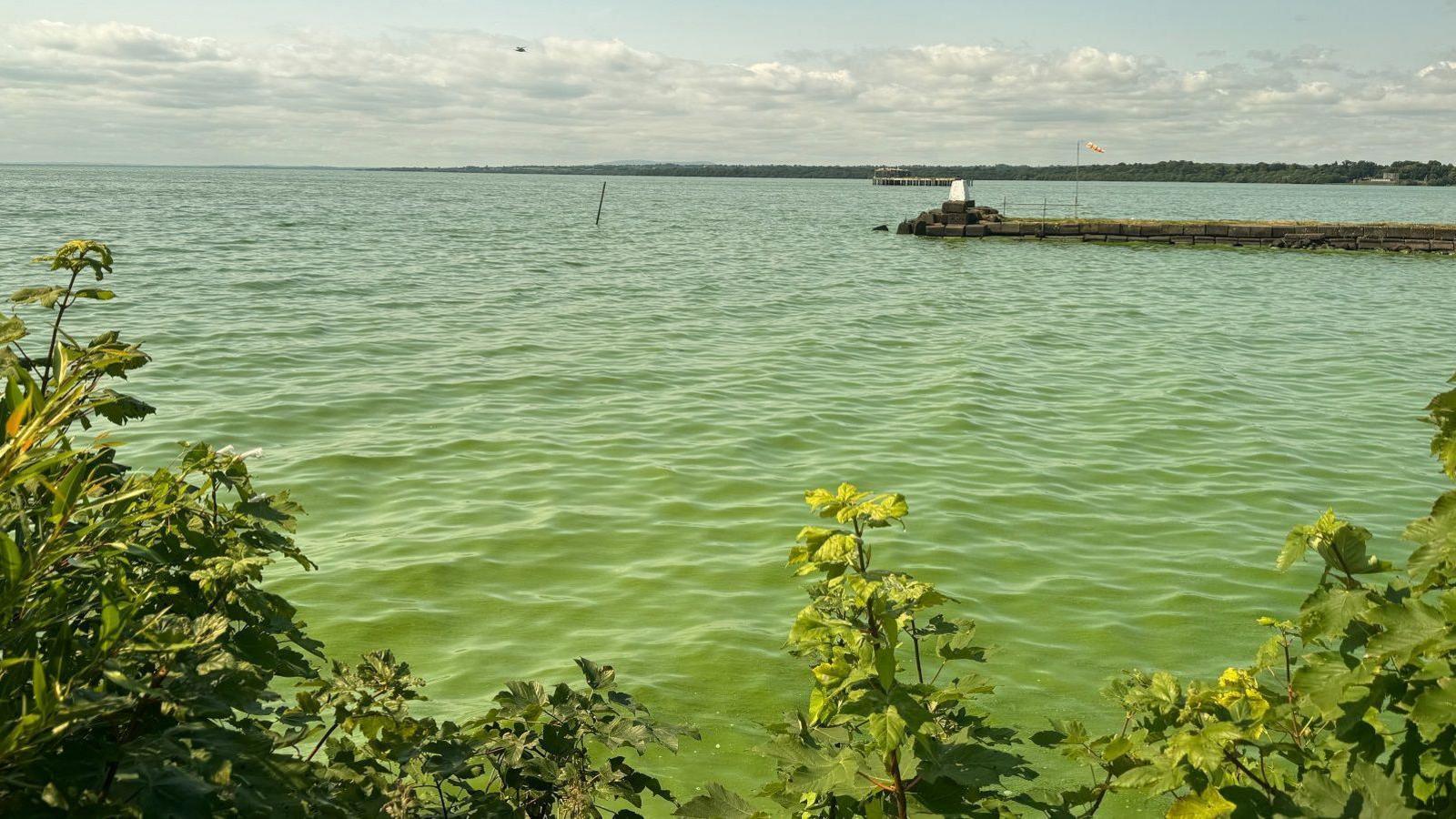
Lough Neagh has been turned green by a bloom of blue-green algae
Blue-green algae, technically known as cyanobacteria, is a collection of microscopic organisms that are naturally present in lakes and streams.
Under certain conditions, blue-green algae can become abundant in warm, shallow, undisturbed, nutrient-rich surface waters that receive a lot of sunlight.
When this occurs, blue-green algae can form blooms that discolour the water, or produce floating mats or scums on the water’s surface.
Where can it be found in Northern Ireland?
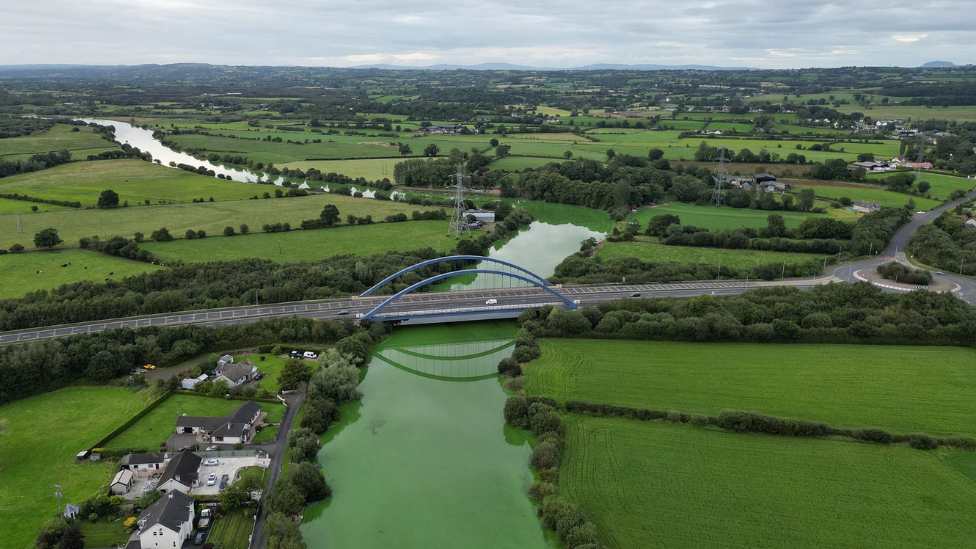
Blue-green algae blooms have been seen on the outskirts of Lough Neagh - in this case Toome - in recents days
So far it has primarily been seen in Lough Neagh and the Lower Bann but other sites have also been impacted, including in recent years north coast bathing waters and the Fermanagh lakes.
The incidence of blue green algae is affecting both commercial and recreational fisheries and bathing water users.
What causes blue-green algae?
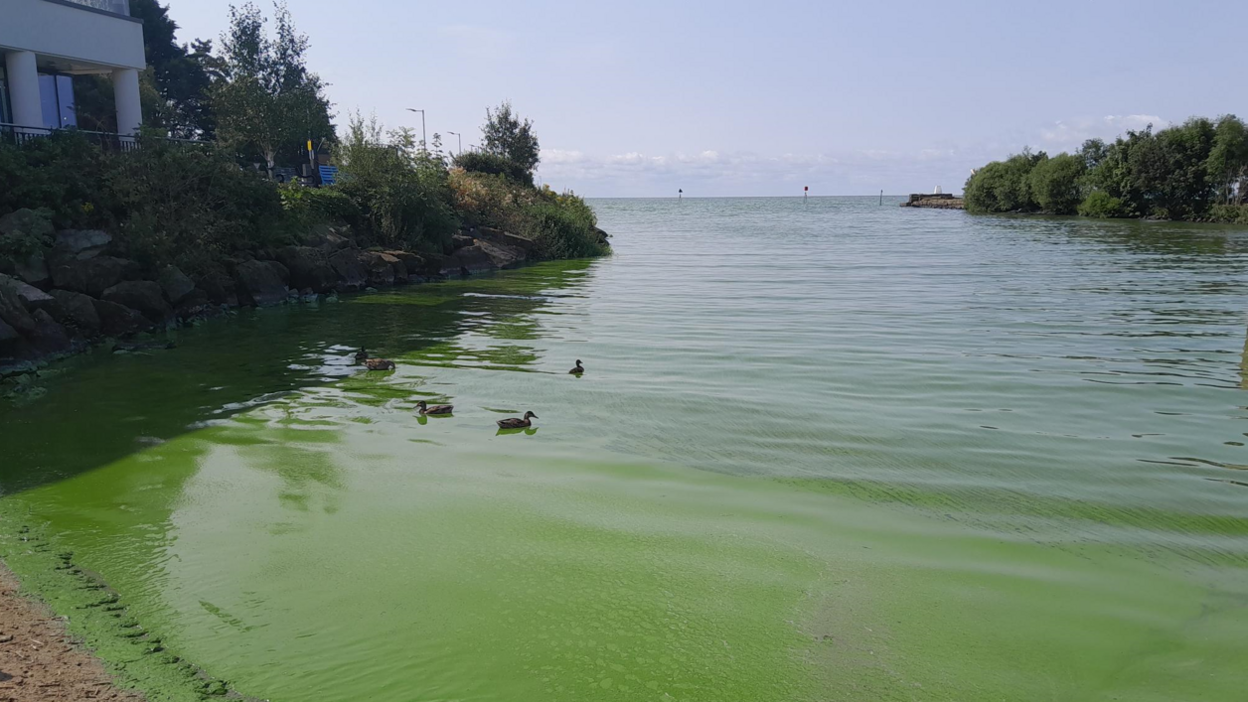
Lough Neagh supplies half of Belfast's drinking water and 40% of Northern Ireland's overall
Long-term pollution - largely from agriculture - is a key part of the problem.
Run-off of fertiliser from surrounding fields over many decades has increased the nutrients in the water, feeding the bacteria's growth.
Along with invasive species in the form of water-clearing zebra mussels, the effects of climate change on water temperature in the lough and on our weather help create the perfect conditions for the potentially toxic algae to bloom from the depths where it has always been present.
Dr Matthew Service, from the Agri-Food and Biosciences Institute (AFBI), said blue-green algae spreads rapidly.
"It starts to double every seven to 14 days," he said.
"So once you get to where you can see it, it's just going to keep going until either the climatic conditions change, there's not enough light for it to reproduce or it just simply breaks up with the autumn and winter weather."
Again this summer, AFBI scientists have detected the algae out in the middle of Lough Neagh, showing the wind is moving the very buoyant species around and causing it to clump together - or aggregate.
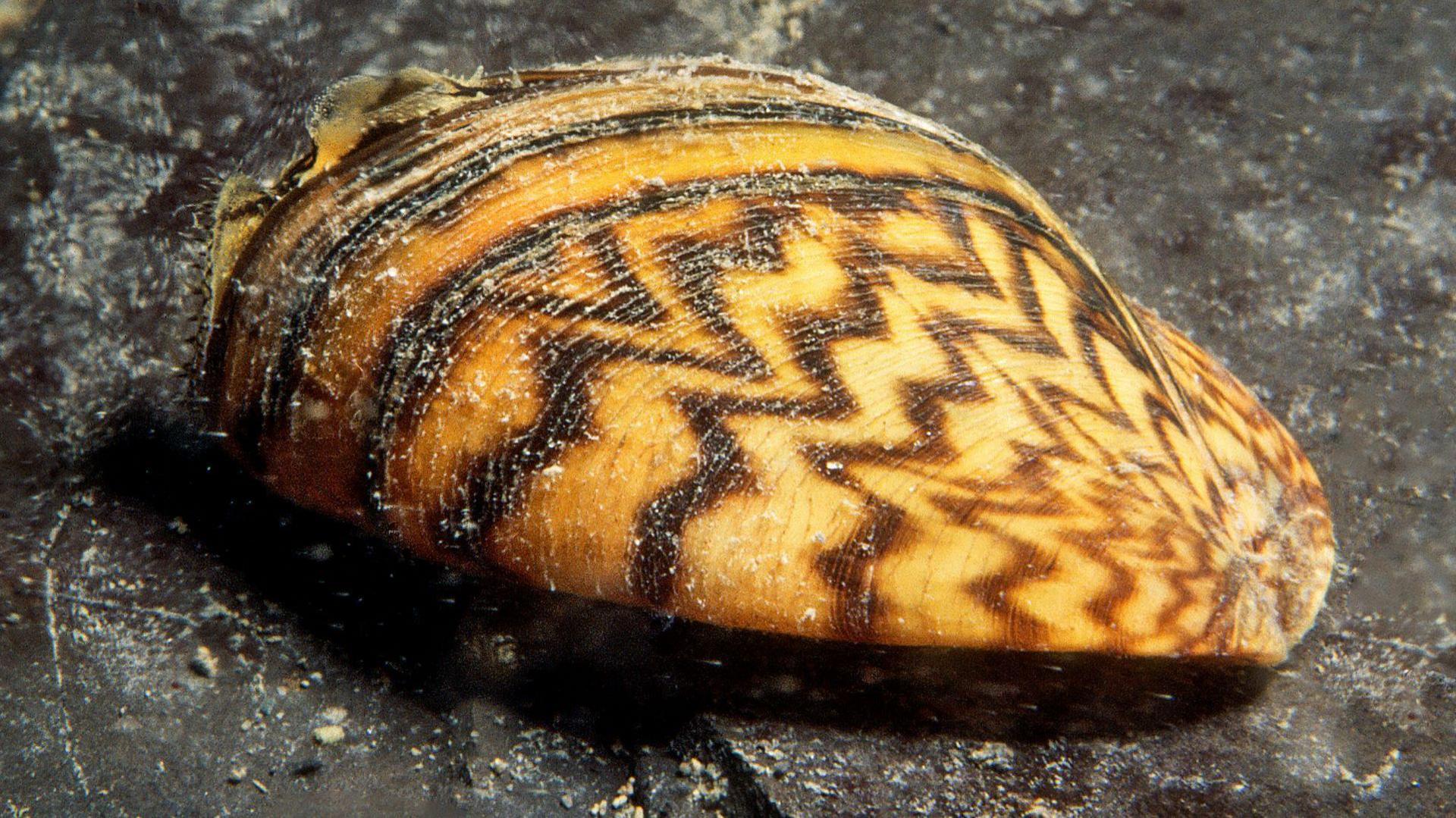
Zebra mussels are an invasive species
When did it first appear on Lough Neagh?
Last year saw the worst bloom of blue-green algae since the mid-1970's.
The AFBI said surface temperature readings were higher than usual for the time of year, with 21C detected in 2023.
The June average in recent years had been 15C.
The AFBI said the conditions could pose a risk to fish and the lough ecosystem.
The algal bloom in 2023 was caused by a spell of warm, settled weather coupled with unusual levels of water clarity.
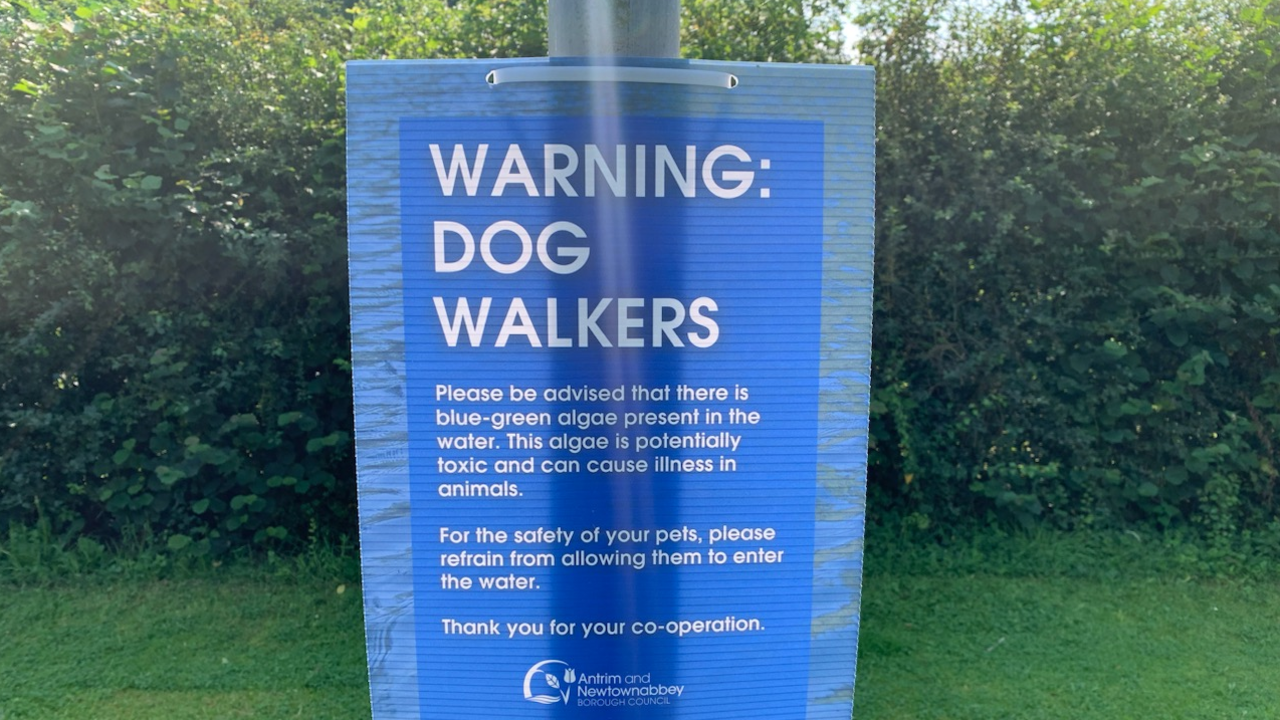
Dog walkers have been asked to refrain from allowing their pets to enter the water
Is blue-green algae harmful?
Some blue-green algae can produce toxins, some do not.
But it is not possible to tell if a bloom is toxic simply by looking at it.
Exposure to high levels of any blue-green algae blooms - whether by contact with water blooms, swallowing that water or inhaling airborne droplets - can cause health effects in people and animals.
These can include diarrhoea, nausea or vomiting, skin, eye or throat irritation; and allergic reactions or breathing difficulties.
But the biggest risk is to pets, livestock and wildlife.
For them it can be extremely dangerous.
Last year a number of dog deaths were reported after the animals swam in affected waters.
What does blue-green algae look like?
During a bloom, the water becomes less clear and may look green, blue-green or greenish-brown.
Scums can form during calm weather when several bloom forming species rise to the surface.
Blooms may last from a few days to several weeks until conditions in the water body change or the weather becomes stormier depriving the algae of light, causing them to die and decompose.
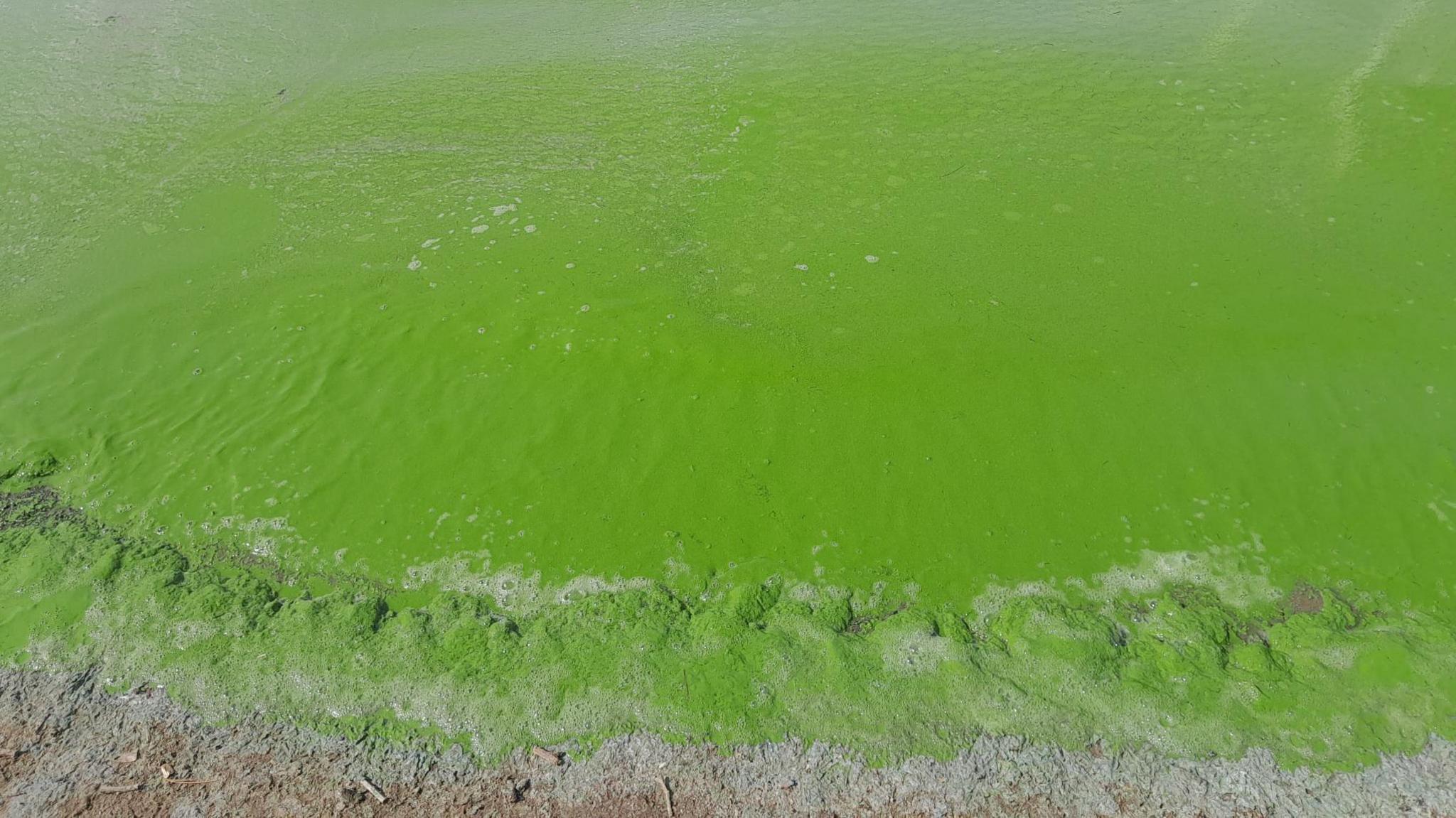
Green water at the shore of Lough Neagh in Antrim
Who owns Lough Neagh?
Lough Neagh is the largest body of fresh water in the British Isles.
The lough supplies half of Belfast's drinking water and 40% of Northern Ireland's overall.
The ownership has been in the Earl of Shaftesbury's estate since the 1800s.
The rights to the lough were given a price tag of £6m, 10 years ago, but civil servants at the time advised the government not to go ahead with the sale. It is not known why.
Nicolas Ashley-Cooper, who is the 12th member of his family to hold the title, told BBC News NI in October that a sale was something he was willing to discuss again.
However, he has since said he would like to transfer his estate's ownership of Lough Neagh "into a charity or community trust model, with rights of nature included".
He added the proposal “may take time”.
A two-year National Lottery Heritage-funded project is being led by Lough Neagh Partnership to explore future potential models of management and ownership.
The initial consultation closed, external in June 2024.
Related topics
- Published2 August 2024
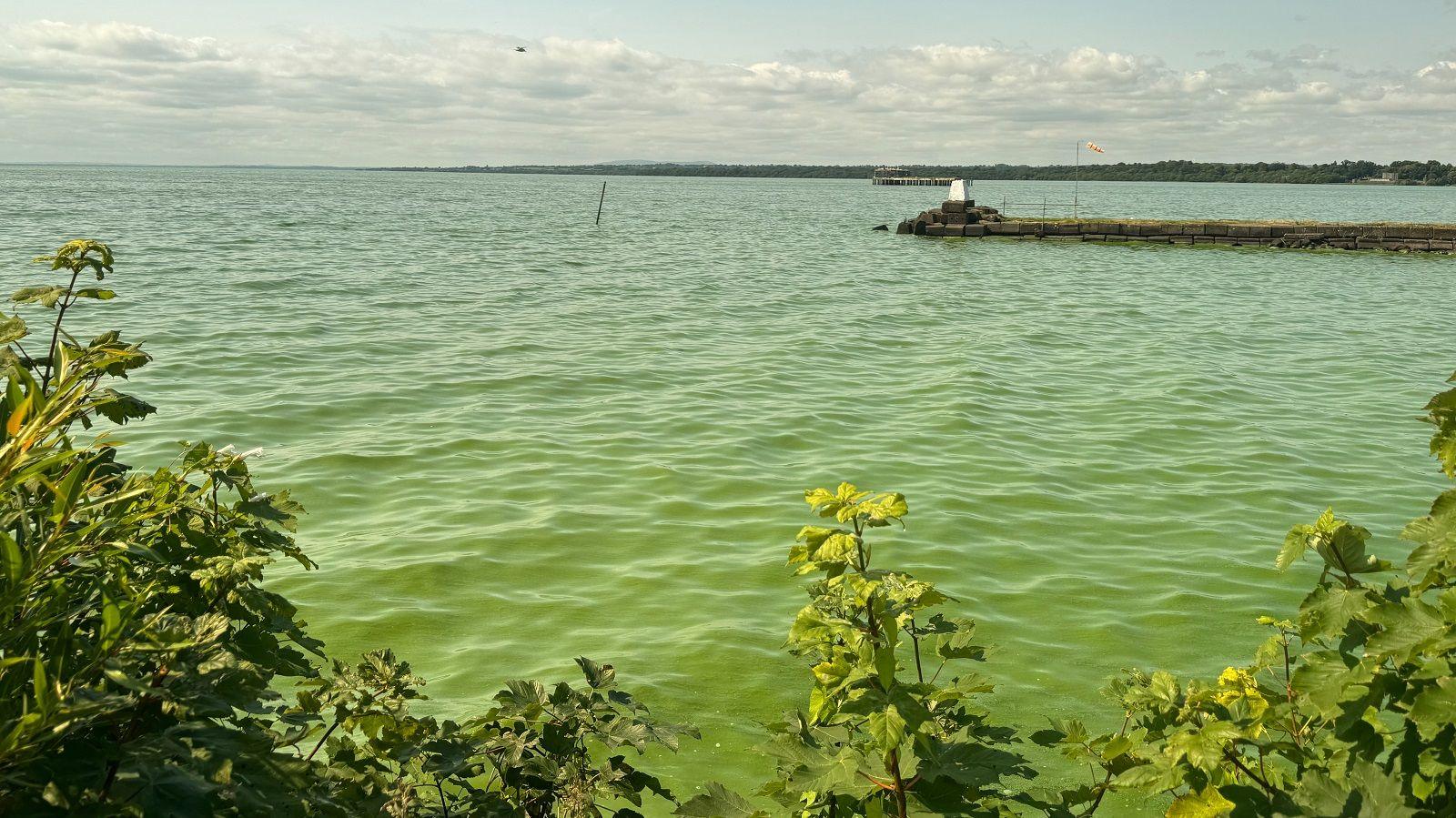
- Published18 July 2024
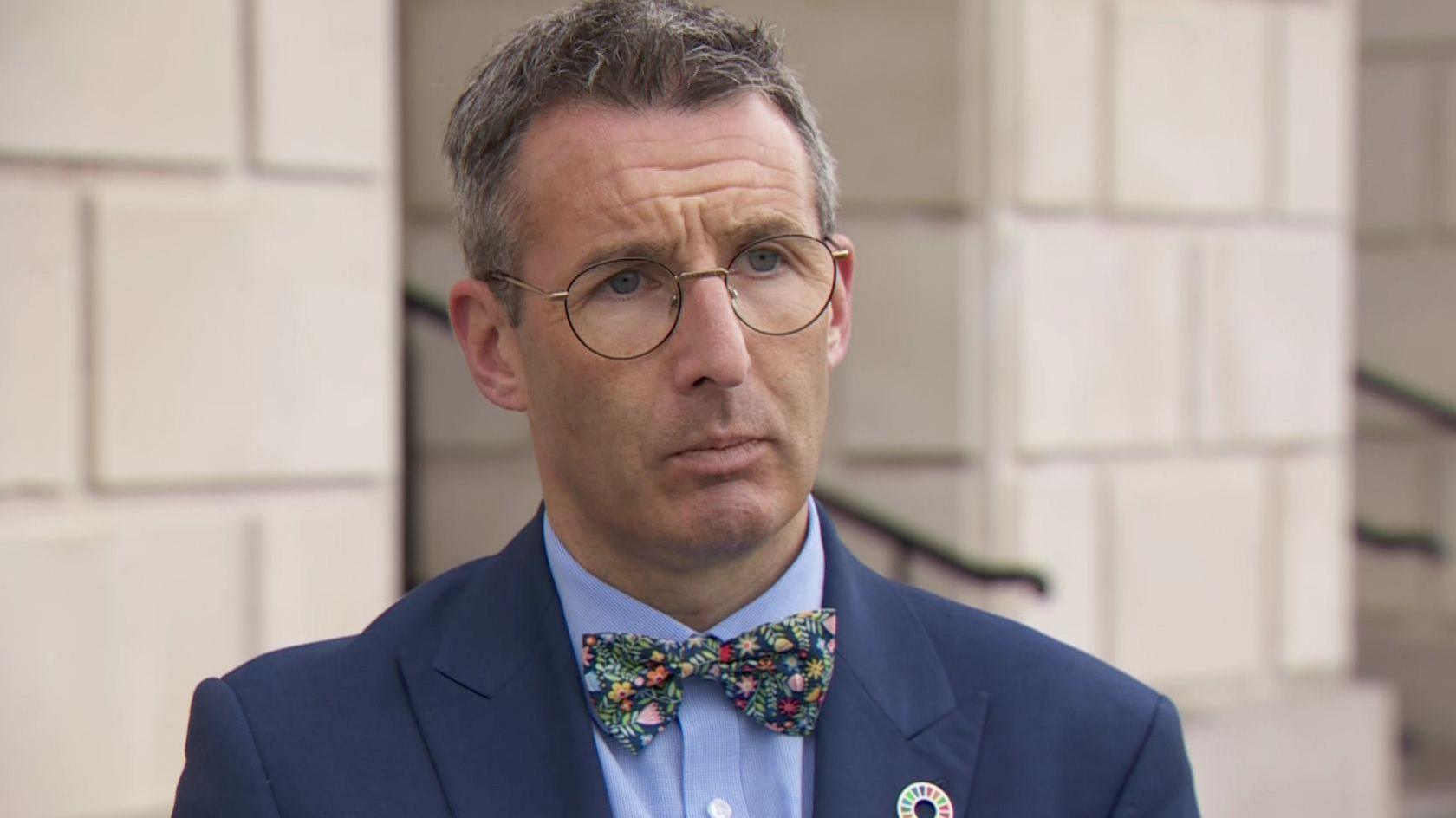
- Published2 January 2024
